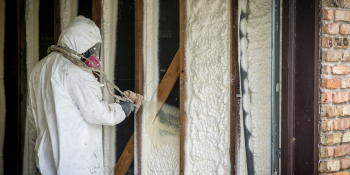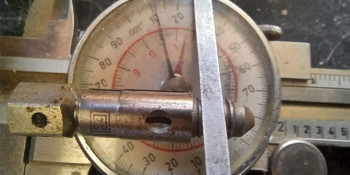Q&A Forums
Frozen Water Services Post New Topic | Post Reply
| Author | Comments |
|---|---|
|
Eugene Ninnie, P.E.
Posted: Mar 13, 2009 10:32 AM
|
Frozen Water Services
I am a Town Engineer in a small high altitude ( 7800ft) town on Western Wyoming. We have water services that vary between 4 feet deep to 8 feet deep and all are influenced by frozen ground conditions. The Only way to prevent freezing is to run water in service called a bleeder, either running a toilet or faucet throughout the winter season. Being a former consulting engineer from back east the entire concept is foreign and needs to be replaced with a better concept. I have been in the job for about 2 years. We are also instituting a street by street campaign to replace the water and sewer as well as update the streets. In doing so I want to insulate the existing services, so I can eliminate the bleeder concept and reduce the flows at the wastewater treatment facility, which is almost at capacity during the winter months, for obvious reasons. Using closed cell technology what would you suggest? It would have to be quick and cost effective
|
|
jeff henderson
Posted: Mar 13, 2009 02:22 PM
|
I have been looking at something similar in my hometown, where the water lines are all placed on a recirculating system (two water lines lead to each house, both under pressure, one slightly higher than the other so as to allow the water to recirc). The recirculating system than goes through a gigantic boiler fired heat exchanger system so as to keep the entire loop above freezing. At least this way it is closed loop, unlike your system. We save on water treatment, but lose on heating oil. Everytime I look at our above-ground sewer boxes, filled with 80 year old wood shavings as their only insulation, I ask myself...how can this be done better? I hope you don't consider this to be a highjacked post, it was intended to be a slight broadening of the original question. |
|
mason
Posted: Mar 13, 2009 07:50 PM
|
The entire oil pipeline in Alaska is insulated with spray polyurethane foam. They insulate the pipes in manufacturing facilities and cover it with a fiberglass reinforcement, then sprayfoam the joints when they install it. Would the pipes be insulated in place or can they be insulated in a factory? |
|
quentin
Posted: Mar 15, 2009 09:23 PM
|
I would think that it would be easy to spray them with closed cell right before they go out to be put in place and then after they are assembled in the hole just shoot some more around the seams. A couple of inches of 3lb roofing foam would insulate it and should hold up pretty well to the back fill on the pipes. Just make sure those doing the work keep an eye out to not drop large rocks against the pipes until there is a good layer of dirt that woudl prevent it from puncturing it. Please correct me if I am wrong on that one Mason. |
|
Eugene Ninnie, P.E.
Posted: Mar 16, 2009 10:45 AM
|
There is another added layer to the problem. We will be doing reaplcements of the main sewer and streets in some places and uncovering water services in those locations. In other areas the water main is being replaced, so services will be as well, therefore those new servcies can be insulated with closed cell foam. What would one reccomend in both situations. |
|
quentin
Posted: Mar 16, 2009 10:59 AM
|
Dig the hole, spray a layer for the pipes to lay on, put them in and spray over the entire thing with one big foam seal should work then. I know they are spraying foam in holes for some oil pipelines and doing it that way. |
|
Eugene Ninnie, P.E.
Posted: Mar 16, 2009 11:08 AM
|
Can you provide us with the type of spray foam to use and the equipment or perhaps a local installer? |
|
quentin
Posted: Mar 16, 2009 08:13 PM
|
Where are you at? I have no problems travelling and a big job would be worth it. Or you can look around here for a local installer in the directory of this site. Equipment wise, I like my Guardian A-5 which would do what you need I bet or order a rig from CPi and send a few guys there to learn since they will provide the classes for free if you buy it from them. They even have a rental rig you can get if it isn't a huge project. The rig I have is the 320 with a bit different equipment and setup but it is a solid setup that should do you with any mods you and your people like for personal tastes. Link at the left to that setup and the price is competitive. Good service and support from them too so you get what you pay for with a purchase like this. As someone in a different thread stated, check out anyone building the rig before you buy it! Just make sure your people do not plan on a diet when they go to CPi since they feed you lunch and dinner and they don't do Mc Donald’s or the like. I gained 5 pounds in two days there! |
|
Posted: Mar 18, 2009 11:32 AM
|
when it comes to sewersand lining there is a special coating that you need to use, it is a polyu urea to protect the foam. We did alot of work in florida on man holes and sewers and second contaiment areas. |
|
mason
Posted: Mar 18, 2009 12:41 PM
|
Polyurea coatings are used frequently in these type of applications. For example, the "Big Dig" in Boston used large amounts of polyurea coating to help seal against cracks in the concrete walls of the tunnel and provide waterproofing. Polyurea sticks very well to concrete and to SPF. |
|
Eugene Ninnie, P.E.
Posted: Apr 14, 2009 05:37 PM
|
cAN YOU PROVIDE SOME PICTORIAL EXAMPLES? CAN A "SOCK GO OVER THE PIPE WHEREBY FOAM IS PUMPED IN TO PROVIDE A TUBE ANNULUS TO CONTROL THE THICKNESS AROUND THE PIPE. HOW ABOUT ICYENE FOAM? |





























